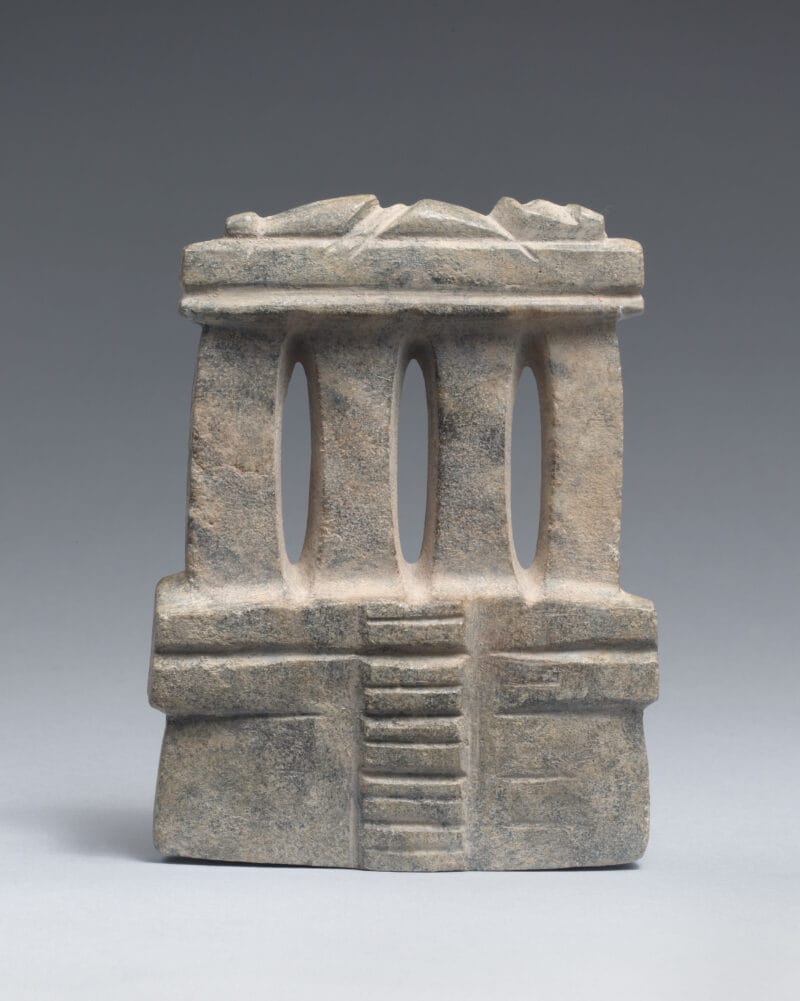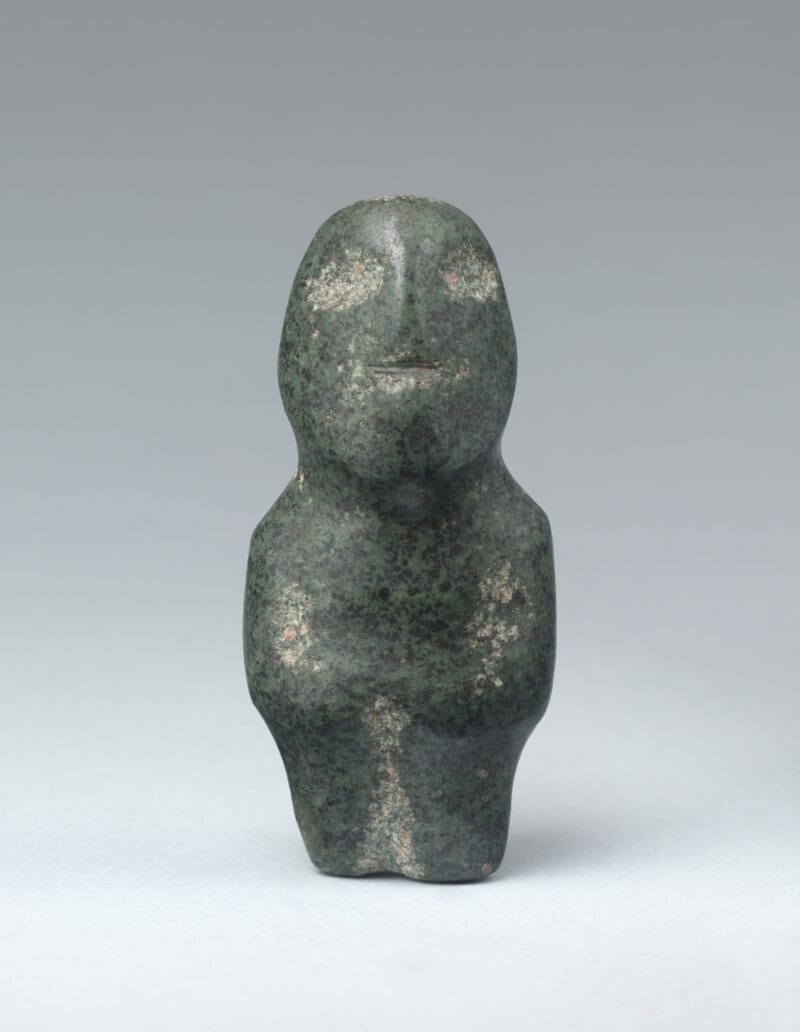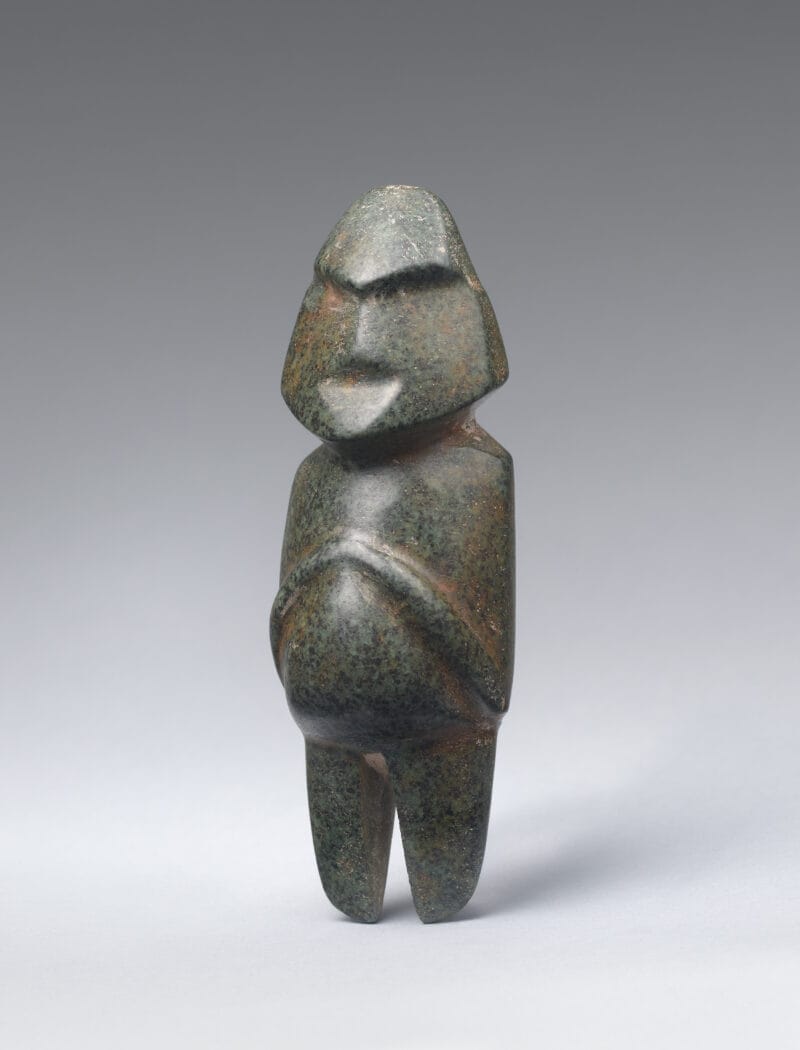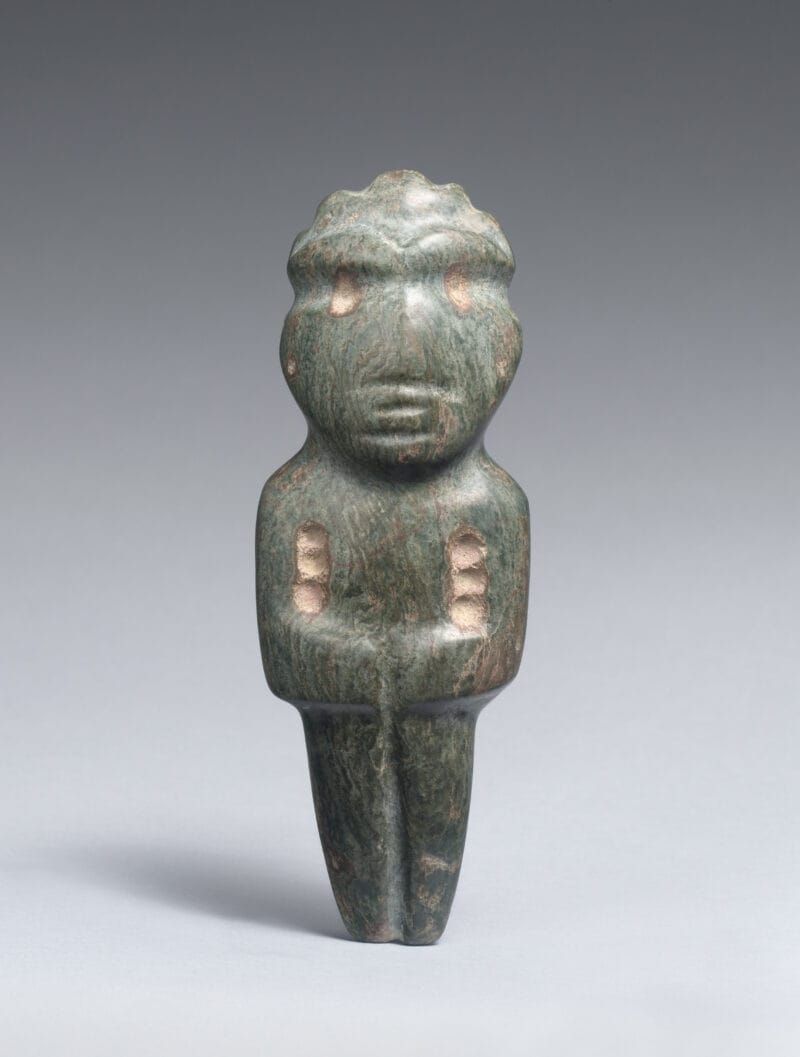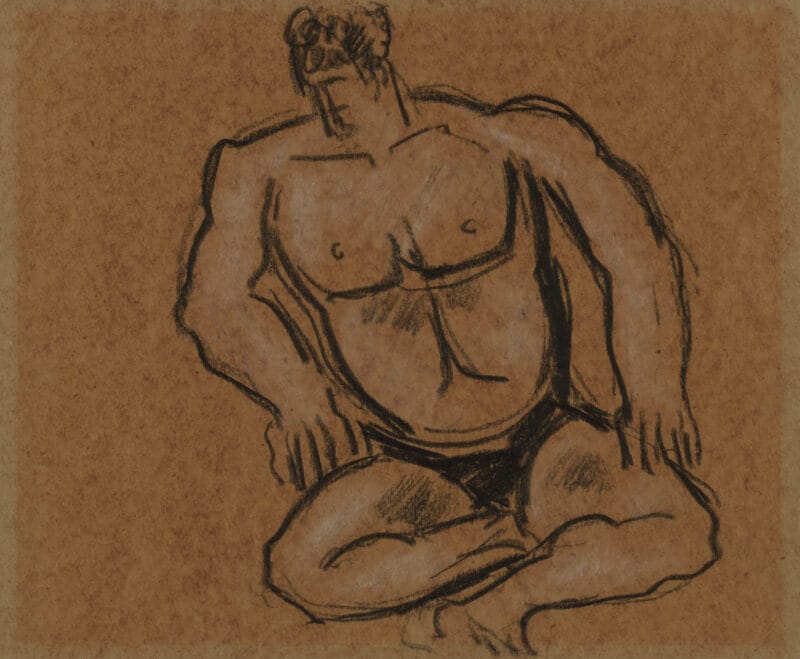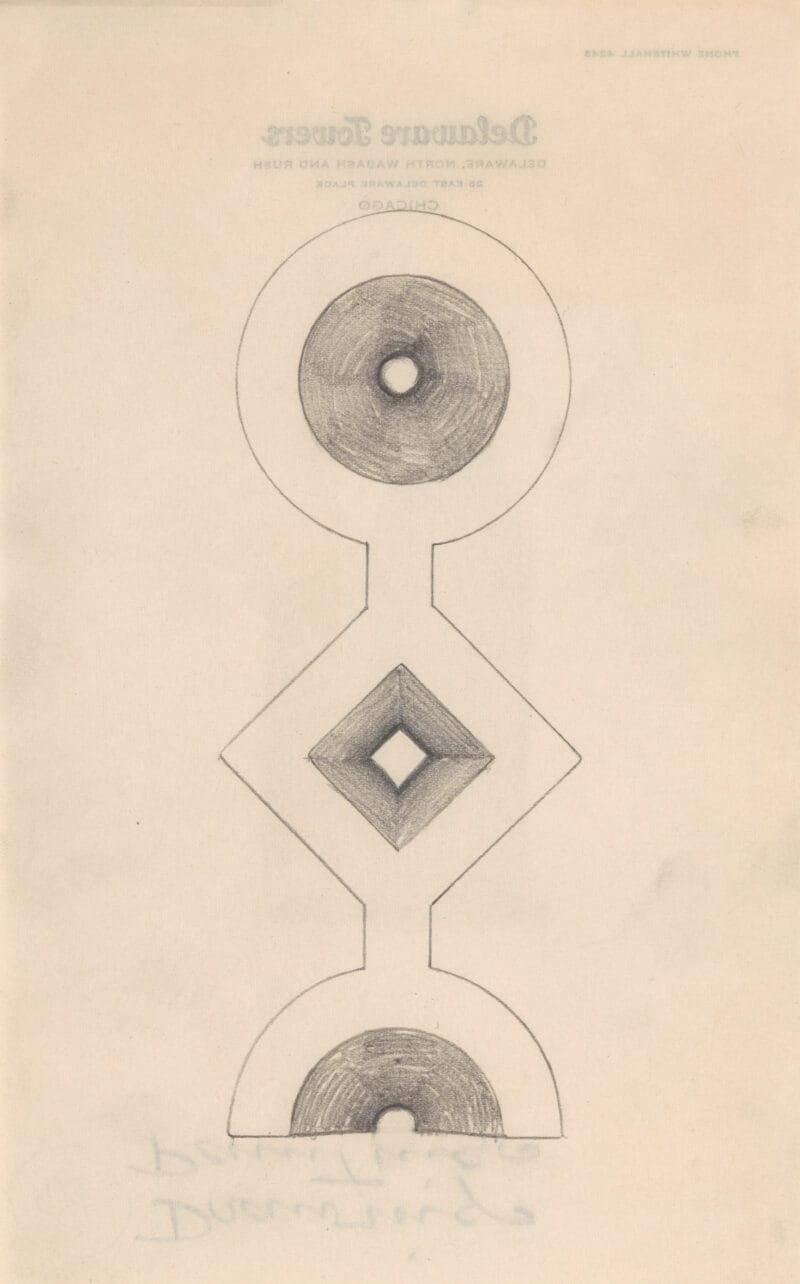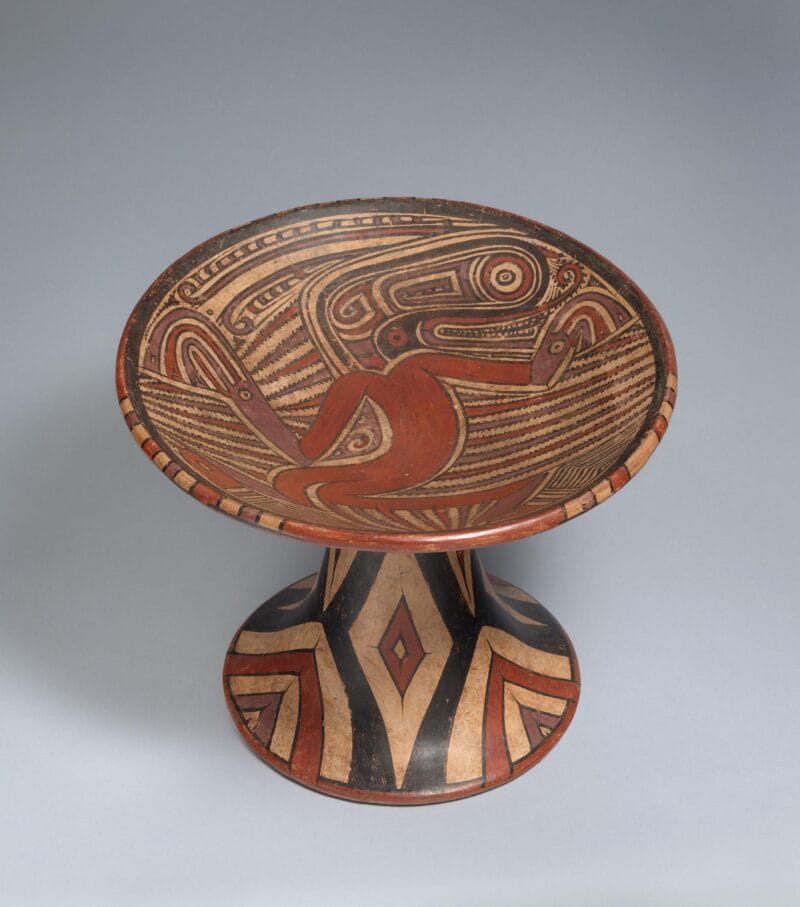
About the Object
This object bears remarkable resemblance to similar works found in the archeological site Sitio Conte. Characteristic of the Maracaras style, influenced by Gran Coclé, this piece features stylized images of two shamans in transformation, or mythical figures. The figures have fangs, large eyes, long claw-like hands, and long bicolored tails that probably represent alligators or caiman. Though the base of the plate is solid red, the pedestal and the top of the plate are decorated with thick purple, red, and beige bands. An hourglass-shaped area decorated with a serrated pattern of alternating red, purple, and beige separates the two mythical figures on the top of the plate.
While archaeological finds associated with burials have led many academics to believe these types of objects were exclusively used in rituals associated with the afterlife, the plate resting on a stem resembles a frutera, a common household item most likely used to display different fruit, and may have symbolized abundance along with divine favor.
Additional Information
A large number of artifacts found in the archeological site Sitio Conte in 1940 indicate that pre-colonial complex societies formed in the Gran Coclé river region, in Panama. Such objects suggest that during funerary rituals, elite tombs were adorned with items bearing patterns of geometric, zoomorphic, and human-deity images. Whether these mortuary objects were thought to have been instrumental in afterlife pursuits or were simply decorative, these pieces contain imagery representative of the intellectual heritage of the population that inhabited this region during the pre-colonial era.
Delefaille Collection, Brussels, Belgium, 1980s;
[Throckmorton Fine Art, New York, NY];
The Jan T. and Marica Vilcek Collection, 2002-2010;
Gift to The Vilcek Foundation, 2010;
